Conference Proceedings by Harriet Edquist
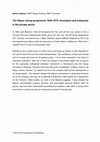
Automotive Historians Australia Conference Proceedings, 2017
ate sector
In 1966 Jack Brabham (1926-2014) became the first, and still the only, person to win a... more ate sector
In 1966 Jack Brabham (1926-2014) became the first, and still the only, person to win a Formula One world championship driving one of his own cars. The BT19 was designed by Ron Tauranac and powered by a Repco Brabham engine (RB620) designed by Phil Irving and engineered by Repco under the supervision of Frank Hallam in Melbourne. While built in England, the BT19 was an all-Australian affair.
Brabham's story is well known; an online search will brings up dozens of sites dedicated to him and his three Formula One world championships. The contribution of those who worked with him is less well known to the general public, if not to those interested in the history of Australian motorsport.1 With this in mind, the intention of the present paper was to account for the surprisingly widespread Australian involvement in international post war racing, focussing on Brabham, Tauranac and Irving with some consideration of Repco. Once in the Repco archive, however, my attention turned to the company itself and the development of its racing program. This research showed that Repco's commitment to racing was almost as old as the company, and was not a response to Brabham's 1963 request for a replacement for the Coventry Climax engine, as much of the literature suggests. It also showed that Repco's decentralised company structure, that encouraged personal initiative within its groups, may have been instrumental in providing the conditions under which a racing culture could thrive, a culture that was not necessarily nurtured for financial gain.
Virtual Reality: 3D techniques for interacting with a virtual museum object, i.e. the ute.
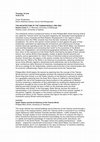
The nineteenth-century architectural history of what Philippa Mein Smith (among others) has calle... more The nineteenth-century architectural history of what Philippa Mein Smith (among others) has called the 'Tasman world' has long been shaped by the nationalist historiographies of twentieth-century Australia and New Zealand. Developments in the region's colonial architecture from the 1780s onwards have thus fed later narratives of national foundations. The call for this session invited scholars to work against the grain of that problematic nationalism by addressing the architecture and infrastructure of those colonial industries operating across the early colonies of New South Wales, Van Diemen's Land and New Zealand, and connecting that 'world' to the economies of the British Empire, the 'Anglosphere', and architectural geographies defined by trade. These papers thus return to the colonial era of the South Pacific informed by the gains of post-colonial history, four-nations British historiography, studies of global colonial networks and systems, and an appreciation for 'minor' forms of historical evidence and architectural practice. Armed thus, the papers in this session consider the architecture of the Tasman world from the 1780s to the 1840s in its historical circumstances, exploring architecture across three different registers: intentioned works definitively cast as Architecture; the 'grey' architecture (after Bremner) of industries, transhipping and colonial infrastructure; and as an analogy for the relationships, systems and structures of the colonial project and its economic underpinnings. Papers move around and across the Tasman Sea.
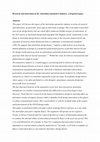
Annual Conference Automotive Historians Australia , 2017
This paper will discuss the legacy of the Australian automotive industry in terms of research and... more This paper will discuss the legacy of the Australian automotive industry in terms of research and innovation, in particular, those aspects that relate to design. This is an under-researched area of our design history but one which offers numerous fruitful avenues of exploration. In his 2014 survey of Australian design historiography Dan Huppatz noted "modernism is a key theme in Australian design history and the nation-state as the obsessive framework for the repetition of anxieties about distinction from or conformity to international standards". (209). He suggests that Australian design history "requires a shift in focus away from the limited definition of design as a modernist professional practice (with little interest beyond the design world) and away from an autonomous nationalist framework (which ultimately generates little interest beyond Australia)". 1 Within this remit, he believes transnational and global histories might be useful. The automotive industry is, I would suggest, a promising field in which to develop new Australian design histories as from its origins in the late nineteenth century it has been a transnational and global phenomenon. And while it did foster individual achievement, particularly around patents, design innovation and advancement tended to be collaborative enterprises to which it is sometimes impossible to put one name. In academic design history where agency is so often attributed to a sole designer, anonymous corporate design has historically been overlooked. The fact that most histories of the automotive sector here have focused on Australian manufacture as a marker of national identity has deflected us away from larger issues. However, Norm Darwin's research on the history of automotive design in Australia offers an alternative avenue of enquiry because while it identifies local design innovation it also places it within a transnational context. This is particularly so with his in-depth study of the origins and achievements of the GM-H design studio. This paper is positioned within a broader context of design history and uses as a case study the Australian auto parts company Repco. The argument will operate on two registers. Firstly, it will use Cantwell and Fai's idea of the firm as a source of innovation and growth to examine the internal culture of innovation promoted by Repco in the postwar period. This is in contradistinction, for example, to Tony Fry's argument that innovation in firms is dependent on external stimuli, primarily market forces. 2 Secondly, it will look at examples of Repco's innovation that we can claim for Australia's design history.
Autopia: the car and the modern city. Proceedings of the 3rd annual conference of Automotive Historians Australia, 2018
Proceedings of 'Autopia. the car and the modern city', the 3rd annual conference of Automotive H... more Proceedings of 'Autopia. the car and the modern city', the 3rd annual conference of Automotive Historians Australia held in Melbourne, 2018.
Automotive Histories: Driving Futures. Proceeding of 1st AHA Conference Melbourne 2016, 2017
Harriet Edquist, Mark Richardson, Simon Lockrey eds, Automotive Histories: Driving Futures, Proce... more Harriet Edquist, Mark Richardson, Simon Lockrey eds, Automotive Histories: Driving Futures, Proceedings of the inaugural Automotive Historian Australia Inc Conference held in Melbourne 2016

In 1957, Clinton Hartley Grattan, one of Australia’s most important foreign observers, wrote of t... more In 1957, Clinton Hartley Grattan, one of Australia’s most important foreign observers, wrote of the shadow of the “urban” in legends of the Australian “bush”.1 He argued that the early frontiers of Australian settlement were frontiers of men with private capital, or entrepreneurs, and those frontiers thus carried more elements of the urban than is commonly realised. Such early colonial enterprises around Australia’s south and southeastern coasts, and across the Tasman included sealing, whaling, milling and pastoralism, as well as missionary, trading and finance ventures. In advance of official settlements in the late-eighteenth and early-nineteenth centuries, entrepreneurs mapped coastlines, pioneered trade routes and colonised lands. Backed by private capital they established colonial infrastructural architecture effecting urban expansion in the Australian colonies, New Zealand and beyond. Yet this architecture is rarely a subject of architectural histories. [...]
Tasmanian College of the Arts, organised by Harriet Edquist (RMIT) and Stuart King (UTas), October 17-18, 2016
Edited Journals by Harriet Edquist
RMIT Design Archives Journal 28 13:1, 2023
Essays and catalogue to accompany the exhibition "Radical Utopia: an archaeology of a creative ci... more Essays and catalogue to accompany the exhibition "Radical Utopia: an archaeology of a creative city", RMIT Gallery, February-May 2023
RMIT Design Archives Journal Vol 12 No 2 , 2022
This issue of the RMIT Design Archives Journal explores how design archives can provide insight i... more This issue of the RMIT Design Archives Journal explores how design archives can provide insight into less expected histories, depending on the slice we take through them. The 'slice' for this issue is Australian designers' relationships with Japan,1960-1990
RMIT DESIGN ARCHIVES JOURNAL vol 12 no 1, 2022
www.rmit.edu.au/designarchives Cover Kartell 4970-84 Round Modular Units, 1964-69, designer Anna ... more www.rmit.edu.au/designarchives Cover Kartell 4970-84 Round Modular Units, 1964-69, designer Anna Castelli Ferrieri, ABS injectionmoulded plastic, Anna Castelli Ferrieri Archives ©Museo Kartell.
RMIT DESIGN ARCHIVES JOURNAL 11:2, 2021
This issue of the RDAJ explores the significance of design archives – and the process of design a... more This issue of the RDAJ explores the significance of design archives – and the process of design archiving – in general, and of the RMIT Design Archives more specifically. There are multiple ways to describe an archive, its significance, and to whom and why it is significant and each of the articles reflects on these complexities in different ways.
The contributors to this issue showcase the value of design – social, cultural, emotional, environmental – as artefact from the past and as a future-facing practice. To different degrees and in different registers, each article also articulates the value of design history as a lens with which to view the world, and the value of design archives as a resource with which to intervene in the world.
RMIT Design Archives Journal 11:1 2021, 2021
This issue, guest edited by Noel Waite, is dedicated to the work of graphic designer and corporat... more This issue, guest edited by Noel Waite, is dedicated to the work of graphic designer and corporate identity designer Pieter Huveneers
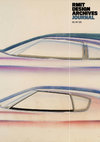
RMIT DESIGN ARCHIVES JOURNAL Vol 5 No 1, 2015
Australia has a highly developed and very active car
culture, the realm of museum curators, histo... more Australia has a highly developed and very active car
culture, the realm of museum curators, historians,
enthusiasts, collectors, car clubs, car manufacturers
and entities such as the racv and Victorian
Historic Racing Register who collectively possess
a wealth of knowledge, much of it tacit and
unrecorded. The academy, which has hitherto
supplied engineers and designers to this industry,
but not historians, can play a significant part in
the articulation and dissemination of this historical
knowledge, and in so doing help to build a
scholarly history of Australian automotive design,
developing not only research protocols and models
but also the next generation of scholars to carry
forward the work. And it is timely that this work
is undertaken now, as the industry undergoes its
most dramatic restructure for a century and the
Australian-made family car becomes a distant
memory.

RMIT Design Archives Journal 10 2, 2020
The theme of this issue of the RMIT Design Archives Journal 'Design and Manufacturing' will, we h... more The theme of this issue of the RMIT Design Archives Journal 'Design and Manufacturing' will, we hope, provide an impetus to a field of research which has not yet, in Australia, developed a vigorous discourse. It is potentially vast if we take into consideration the disciplines of design - from the built environment fields of architecture, interior and landscape architecture to those which rely on prototyping - design for manufacture - as in fashion and industrially produced objects like bicycles. But, as these essays confirm, such a focus has the ability to reconceptualise some of the norms of design history.
Philip Goad opens the collection with an examination of post-war Australia when "architects, artists and designers were enlisted as part of a broader push in a new and vital project of national recovery: the establishment and growth of a resilient local manufacturing industry." What Goad argues for here is multi-disciplinary design research, an approach which is not common in Australia, particularly in architectural history. After a survey of both the history and historiography of the field, Goad focuses on the textile manufacturer Bruck Mills at Wangaratta as his case study for it "can be read as a metaphor for the fate of manufacturing in Australia . . .when the physical and aesthetic attributes of art, design, photography and architecture could all combine to give image to post-war economic recovery, the building of a multi-cultural workforce, and above all, pride in the business of making."
Giorgio Marfella, by contrast, focuses on the design of the headquarters of another major textile manufacturer, Feltex on the edge of central Melbourne. Feltex was "one of the largest Australian-owned manufacturing corporations, controlling a network of subsidiary wool and textile manufacturing companies with 7,000 workers and 65 factories in Australia, New Zealand and South Africa." Designed in 1959 by Guilford Bell and David Godsell, Feltex House adjoined ICI House in East Melbourne and Marfella discusses its design as both a study in post-war, American-inspired office typology and an instance of a changing urban morphology which saw major industrial and manufacturing concerns establish their headquarters in central Melbourne.
Laura Jocic and Robbie Napper adopt a different point of view from Goad and Marfella, as both discuss the ways in which manufacturing impacts on the design process. Through her study of the Sara Thorn and Bruce Slorach fashion studio in the 1980s and 90s, Jocic documents the intricate relationship between designer and manufacturer when Melbourne's CBD hummed and Flinders Lane was still a viable fashion precinct. She notes: "Slorach and Thorn produced all their garments locally and drew on the expertise and specialised production processes of local manufacturers and fabricators to create their own highly individual designs." They also worked with specialised artisans to produce accessories such as belt buckles and belts and, as Jocic observes: "These types of creative and technical-based interactions between designer and manufacturer forged an environment where creativity and problem-solving worked hand-in-hand to flesh out and realise conceptual ideas."
Robbie Napper's examination of bicycle design brings us into the present and provides some respite from the overwhelming sense of loss that one feels contemplating the fate of post-war manufacturing in Victoria. Focusing on bicycle manufacture, Napper comments that his research:
determines that while the principles of mass customisation create ideal conditions for both manufacturer and consumer with regard to the end product, they also set up conditions for reinvention. Reinvention occurs when consumers conceive of and develop novel product variants, and the bicycle provides an instructive example of design and manufacturing-assembly processes being available at a local level.
Thus his paper differs from the other three because within the ecology of bicycle design and manufacture the customer has a central role. Not only is there supply of design, there is demand, and demand influences supply. So, from his observations of cyclists in action he notes "a variety of treatments representing reinvention of the bicycle, for example the addition of components such as luggage racks and pannier bags. Also noteworthy are the reinvention acts which remove parts from the bicycle, the extreme example of which turns an otherwise ordinary bicycle into a pared down fixie." Central to mass customisation and reinvention is the bicycle shop which provides the space for exchanges between designer, product manager and customer. Napper concludes:
Manufacturing and design are typically viewed as industrialised practices which occur behind closed doors. In the case of bicycle design, this research has identified that the approach of mass customisation brings design and manufacturing into the realm of the consumer, with one of the main actors in this system being the bicycle shop, which is reconceived as an important outpost of design and manufacturing capability.
There is something optimistic about this statement. As we draw to the end of a difficult year where in isolation we have been driven onto our own resources and led to question the apparent certainties of globalised production and consumption and at the same time observe the fragility of national prosperity and well-being, the image of the local shop where design is embodied and exchanged is comforting indeed.

RMIT Design Archives Journal, 2020
This issue of the RMIT Design Archives Journal brings together diverse essays
on Melbourne post-... more This issue of the RMIT Design Archives Journal brings together diverse essays
on Melbourne post-war and more recent architecture and architectural education.
It is bookended by first-person narratives that in contrasting ways reflect on
architectural education at RMIT over a 35-year period.
Michael Spooner opens with an investigation of Edmond and Corrigan’s office in Little La Trobe Street which was the site not only of the architects’ labour but also of Corrigan’s
teaching. Using research devices that are both empirical and creative, Spooner offers a new way of communicating architecture. Spurred on by the shock of entering the offices
vacated after the death of Peter Corrigan in 2016, Spooner sets himself the task of reanimating the space before it is lost to history; it is indeed a heritage project. Corralling
his memories as well as those of others who worked there, he brings together formal architectural analyses of the building’s modernist lineage, a first-person account of
moving through the space, a sort of animated architectural section, analysis of the architects’ design process in forming the interiors and, a reanimation of the space through architectural studios he has conducted there. This text is accompanied by a set of remarkable drawings carried out by Spooner, Jack Murray and William Bennie; plans,
sections and four ‘capriccios’ which are dense compendia of the research underpinning the text.
Peter Downton, by contrast, consults his own memory, the recollections of others and various notes and diagrams to put together “a speculative memoir” of the 1985 RMIT Architecture course which, I must confess, I particularly admired. Downton and Tom Emodi wrote a proposal for a new architectural course in 1982, and after development and refinement by the architecture staff it was operational by first semester 1985. Downton’s article, like Spooner’s, exists as a first-person textual account, but also as a set
of illustrations, the alluring 1985 flow chart for the course being a magisterial pedagogical diagram. Downton’s act of historical recovery and reconceptualisation affirms a particular view of the university’s role in student education. It was an experiment in student-focussed design pedagogy where each student could, and did, design their own pathway through the course offerings, negotiating core and elective subjects to suit their needs. The course unfortunately did not survive the rigours of RMIT
bureaucracy for more than a few years. It lives on, however, as an elusive and compelling idea whose day might come again through digital means.
The three internal essays in this collection also have some common characteristics. Each focuses on one architectural practice during the 1950s and 1960s and foregrounds the agency of the client - corporate, personal and institutional in the design process.
Stuart King’s essay is broadly conceived, spanning the nineteenth and twentieth centuries’ activities of one corporation, the Van Diemen’s Land Company in Tasmania
founded in 1825, and its Victorian agents Alan and Blyth Ritchie. It is in this historical context that he positions Geoffrey Woodfall’s Woolnorth homestead, deftly spinning
around this architectural object the threads of colonial and postcolonial Tasmanian histories, dynastic ambition and architectural form. The latter is important for, while
Woodfall’s work has been discussed in terms of Melbourne’s Wrightian legacy, this is the first major architectural study of one of his key buildings that includes a close analysis
of its spatial and tectonic form and Woodfall’s “increasing rationalisation of space, structure and construction”.King thus draws Woodfall out of the historiographical niche
in which he has rather languished and placed him firmly in important architectural discourses of the late 1960s,including that of “regionalism”.
Roger Benjamin’s recovery of an almost unknown work by Czech émigré architect Alex Jelinek foregrounds the architect’s relationship with Melbourne painter and client Lina Bryans and her role in promoting Jelinek’s architectural practice, through her
family and other connections. While Jelinek’s Benjamin house in ACT is a celebrated example of experimental modernism, the small studio that he designed for Bryans
in Richmond, which still exists, has never been published. It is in its own way, original and striking and surprisingly contemporary, especially in the way the architect distinguishes his new work from the Victorian mansion to which it is attached. With access to correspondence between Jelinek and Bryans and photographs from the time of their occupation of the house, Benjamin offers an intimate account of the studio’s creation.
Finally, Harriet Edquist’s essay on Frederick Romberg, delivered at a conference on religious architecture convened at Melbourne School of Design in 2018, brings to attention the architect’s work for the Lutheran community in Victoria, ACT and Northern Territory. Through this case study the impact of religious communities on the
development of Australian modernism can be seen as “a pivotal component in the construction of culture and community in rural and suburban expansion”.1 Each of
the five essays published here is richly supported by archival evidence, relying for its argument on maps, drawings, diagrams, correspondence and fallible, but potent, memories.
Harriet Edquist
Editor
RMIT Design Archives Journal, 2019
Continuing a project initiated by Transition magazine 30 years ago, this issue of RMIT Design Arc... more Continuing a project initiated by Transition magazine 30 years ago, this issue of RMIT Design Archives Journal examines Robin Boyd's use of the media to build a consensus about the role of architecture in post-war Australia .
RMIT Design Archives Journal, 2019
The two articles by Harriet Edquist and Philip Goad in this issue of the RMIT Design Archives Jou... more The two articles by Harriet Edquist and Philip Goad in this issue of the RMIT Design Archives Journal elucidate for the first time architectural concerns and tropes that were worked out in Vienna in the interwar years and brought to Australia, to undergo a dynamic process of translation into forms and spaces that suited their new situations.
Journal Articles by Harriet Edquist
RMIT Design Archives Journal 13:1, 2023
A brief survey of Robert Pearce 's 10-year career as an illustrator, curator and fashion entrepre... more A brief survey of Robert Pearce 's 10-year career as an illustrator, curator and fashion entrepreneur in Melbourne 1979-1989
RMIT Design Archives Journal vol 12 no 2, 2022
This article examines the Australian trade pavilions designed by George Kral and Bernard Joyce 19... more This article examines the Australian trade pavilions designed by George Kral and Bernard Joyce 1960-61 for the Tokyo and Osaka International Trade Fairs. It situates them within the context of Australia's post-war trading relationship with Japan, and suggests a position within the theoretical concept of 'grey architecture'.
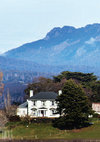
RMIT Design Archives Journal Vol 12 No 1, 2022
This article explores the beginning of art woodcarving in Australia, taking the formative years i... more This article explores the beginning of art woodcarving in Australia, taking the formative years in Melbourne of Tasmanian woodcarver Ellen Nora Payne as a case study. It does this with a view to addressing the marginalisation and under-representation of women entrepreneurs and makers in the present histories of Australian design, craft and material culture, a situation which is not unique to this country. At issue here is what Marisa Fuentes has identified as the "fragmentary and incomplete" nature of women's archives which often renders them and their work invisible in the larger narratives of modernism. Added to this are the gender ideologies of the nineteenth century which tended to align middle-class women to the domestic sphere where their hand work could be dismissed as amateur. By the late nineteenth century, however, Australian women were mobilising their domestic expertise in craft and handwork to claim space in the public sphere although they did so against vocal and well-organised resistance by men. In this battle for 'a room of their own', home studios became significant sites of a contested subjecthood. This examination of Payne's early career casts light on all these issues and suggests new ways to approach the historiography of women’s work and its place in the Australian Arts and Crafts movement

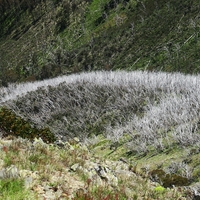





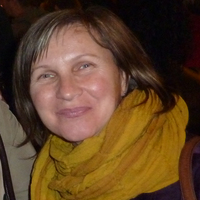

Uploads
Conference Proceedings by Harriet Edquist
In 1966 Jack Brabham (1926-2014) became the first, and still the only, person to win a Formula One world championship driving one of his own cars. The BT19 was designed by Ron Tauranac and powered by a Repco Brabham engine (RB620) designed by Phil Irving and engineered by Repco under the supervision of Frank Hallam in Melbourne. While built in England, the BT19 was an all-Australian affair.
Brabham's story is well known; an online search will brings up dozens of sites dedicated to him and his three Formula One world championships. The contribution of those who worked with him is less well known to the general public, if not to those interested in the history of Australian motorsport.1 With this in mind, the intention of the present paper was to account for the surprisingly widespread Australian involvement in international post war racing, focussing on Brabham, Tauranac and Irving with some consideration of Repco. Once in the Repco archive, however, my attention turned to the company itself and the development of its racing program. This research showed that Repco's commitment to racing was almost as old as the company, and was not a response to Brabham's 1963 request for a replacement for the Coventry Climax engine, as much of the literature suggests. It also showed that Repco's decentralised company structure, that encouraged personal initiative within its groups, may have been instrumental in providing the conditions under which a racing culture could thrive, a culture that was not necessarily nurtured for financial gain.
Tasmanian College of the Arts, organised by Harriet Edquist (RMIT) and Stuart King (UTas), October 17-18, 2016
Edited Journals by Harriet Edquist
The contributors to this issue showcase the value of design – social, cultural, emotional, environmental – as artefact from the past and as a future-facing practice. To different degrees and in different registers, each article also articulates the value of design history as a lens with which to view the world, and the value of design archives as a resource with which to intervene in the world.
culture, the realm of museum curators, historians,
enthusiasts, collectors, car clubs, car manufacturers
and entities such as the racv and Victorian
Historic Racing Register who collectively possess
a wealth of knowledge, much of it tacit and
unrecorded. The academy, which has hitherto
supplied engineers and designers to this industry,
but not historians, can play a significant part in
the articulation and dissemination of this historical
knowledge, and in so doing help to build a
scholarly history of Australian automotive design,
developing not only research protocols and models
but also the next generation of scholars to carry
forward the work. And it is timely that this work
is undertaken now, as the industry undergoes its
most dramatic restructure for a century and the
Australian-made family car becomes a distant
memory.
Philip Goad opens the collection with an examination of post-war Australia when "architects, artists and designers were enlisted as part of a broader push in a new and vital project of national recovery: the establishment and growth of a resilient local manufacturing industry." What Goad argues for here is multi-disciplinary design research, an approach which is not common in Australia, particularly in architectural history. After a survey of both the history and historiography of the field, Goad focuses on the textile manufacturer Bruck Mills at Wangaratta as his case study for it "can be read as a metaphor for the fate of manufacturing in Australia . . .when the physical and aesthetic attributes of art, design, photography and architecture could all combine to give image to post-war economic recovery, the building of a multi-cultural workforce, and above all, pride in the business of making."
Giorgio Marfella, by contrast, focuses on the design of the headquarters of another major textile manufacturer, Feltex on the edge of central Melbourne. Feltex was "one of the largest Australian-owned manufacturing corporations, controlling a network of subsidiary wool and textile manufacturing companies with 7,000 workers and 65 factories in Australia, New Zealand and South Africa." Designed in 1959 by Guilford Bell and David Godsell, Feltex House adjoined ICI House in East Melbourne and Marfella discusses its design as both a study in post-war, American-inspired office typology and an instance of a changing urban morphology which saw major industrial and manufacturing concerns establish their headquarters in central Melbourne.
Laura Jocic and Robbie Napper adopt a different point of view from Goad and Marfella, as both discuss the ways in which manufacturing impacts on the design process. Through her study of the Sara Thorn and Bruce Slorach fashion studio in the 1980s and 90s, Jocic documents the intricate relationship between designer and manufacturer when Melbourne's CBD hummed and Flinders Lane was still a viable fashion precinct. She notes: "Slorach and Thorn produced all their garments locally and drew on the expertise and specialised production processes of local manufacturers and fabricators to create their own highly individual designs." They also worked with specialised artisans to produce accessories such as belt buckles and belts and, as Jocic observes: "These types of creative and technical-based interactions between designer and manufacturer forged an environment where creativity and problem-solving worked hand-in-hand to flesh out and realise conceptual ideas."
Robbie Napper's examination of bicycle design brings us into the present and provides some respite from the overwhelming sense of loss that one feels contemplating the fate of post-war manufacturing in Victoria. Focusing on bicycle manufacture, Napper comments that his research:
determines that while the principles of mass customisation create ideal conditions for both manufacturer and consumer with regard to the end product, they also set up conditions for reinvention. Reinvention occurs when consumers conceive of and develop novel product variants, and the bicycle provides an instructive example of design and manufacturing-assembly processes being available at a local level.
Thus his paper differs from the other three because within the ecology of bicycle design and manufacture the customer has a central role. Not only is there supply of design, there is demand, and demand influences supply. So, from his observations of cyclists in action he notes "a variety of treatments representing reinvention of the bicycle, for example the addition of components such as luggage racks and pannier bags. Also noteworthy are the reinvention acts which remove parts from the bicycle, the extreme example of which turns an otherwise ordinary bicycle into a pared down fixie." Central to mass customisation and reinvention is the bicycle shop which provides the space for exchanges between designer, product manager and customer. Napper concludes:
Manufacturing and design are typically viewed as industrialised practices which occur behind closed doors. In the case of bicycle design, this research has identified that the approach of mass customisation brings design and manufacturing into the realm of the consumer, with one of the main actors in this system being the bicycle shop, which is reconceived as an important outpost of design and manufacturing capability.
There is something optimistic about this statement. As we draw to the end of a difficult year where in isolation we have been driven onto our own resources and led to question the apparent certainties of globalised production and consumption and at the same time observe the fragility of national prosperity and well-being, the image of the local shop where design is embodied and exchanged is comforting indeed.
on Melbourne post-war and more recent architecture and architectural education.
It is bookended by first-person narratives that in contrasting ways reflect on
architectural education at RMIT over a 35-year period.
Michael Spooner opens with an investigation of Edmond and Corrigan’s office in Little La Trobe Street which was the site not only of the architects’ labour but also of Corrigan’s
teaching. Using research devices that are both empirical and creative, Spooner offers a new way of communicating architecture. Spurred on by the shock of entering the offices
vacated after the death of Peter Corrigan in 2016, Spooner sets himself the task of reanimating the space before it is lost to history; it is indeed a heritage project. Corralling
his memories as well as those of others who worked there, he brings together formal architectural analyses of the building’s modernist lineage, a first-person account of
moving through the space, a sort of animated architectural section, analysis of the architects’ design process in forming the interiors and, a reanimation of the space through architectural studios he has conducted there. This text is accompanied by a set of remarkable drawings carried out by Spooner, Jack Murray and William Bennie; plans,
sections and four ‘capriccios’ which are dense compendia of the research underpinning the text.
Peter Downton, by contrast, consults his own memory, the recollections of others and various notes and diagrams to put together “a speculative memoir” of the 1985 RMIT Architecture course which, I must confess, I particularly admired. Downton and Tom Emodi wrote a proposal for a new architectural course in 1982, and after development and refinement by the architecture staff it was operational by first semester 1985. Downton’s article, like Spooner’s, exists as a first-person textual account, but also as a set
of illustrations, the alluring 1985 flow chart for the course being a magisterial pedagogical diagram. Downton’s act of historical recovery and reconceptualisation affirms a particular view of the university’s role in student education. It was an experiment in student-focussed design pedagogy where each student could, and did, design their own pathway through the course offerings, negotiating core and elective subjects to suit their needs. The course unfortunately did not survive the rigours of RMIT
bureaucracy for more than a few years. It lives on, however, as an elusive and compelling idea whose day might come again through digital means.
The three internal essays in this collection also have some common characteristics. Each focuses on one architectural practice during the 1950s and 1960s and foregrounds the agency of the client - corporate, personal and institutional in the design process.
Stuart King’s essay is broadly conceived, spanning the nineteenth and twentieth centuries’ activities of one corporation, the Van Diemen’s Land Company in Tasmania
founded in 1825, and its Victorian agents Alan and Blyth Ritchie. It is in this historical context that he positions Geoffrey Woodfall’s Woolnorth homestead, deftly spinning
around this architectural object the threads of colonial and postcolonial Tasmanian histories, dynastic ambition and architectural form. The latter is important for, while
Woodfall’s work has been discussed in terms of Melbourne’s Wrightian legacy, this is the first major architectural study of one of his key buildings that includes a close analysis
of its spatial and tectonic form and Woodfall’s “increasing rationalisation of space, structure and construction”.King thus draws Woodfall out of the historiographical niche
in which he has rather languished and placed him firmly in important architectural discourses of the late 1960s,including that of “regionalism”.
Roger Benjamin’s recovery of an almost unknown work by Czech émigré architect Alex Jelinek foregrounds the architect’s relationship with Melbourne painter and client Lina Bryans and her role in promoting Jelinek’s architectural practice, through her
family and other connections. While Jelinek’s Benjamin house in ACT is a celebrated example of experimental modernism, the small studio that he designed for Bryans
in Richmond, which still exists, has never been published. It is in its own way, original and striking and surprisingly contemporary, especially in the way the architect distinguishes his new work from the Victorian mansion to which it is attached. With access to correspondence between Jelinek and Bryans and photographs from the time of their occupation of the house, Benjamin offers an intimate account of the studio’s creation.
Finally, Harriet Edquist’s essay on Frederick Romberg, delivered at a conference on religious architecture convened at Melbourne School of Design in 2018, brings to attention the architect’s work for the Lutheran community in Victoria, ACT and Northern Territory. Through this case study the impact of religious communities on the
development of Australian modernism can be seen as “a pivotal component in the construction of culture and community in rural and suburban expansion”.1 Each of
the five essays published here is richly supported by archival evidence, relying for its argument on maps, drawings, diagrams, correspondence and fallible, but potent, memories.
Harriet Edquist
Editor
Journal Articles by Harriet Edquist
In 1966 Jack Brabham (1926-2014) became the first, and still the only, person to win a Formula One world championship driving one of his own cars. The BT19 was designed by Ron Tauranac and powered by a Repco Brabham engine (RB620) designed by Phil Irving and engineered by Repco under the supervision of Frank Hallam in Melbourne. While built in England, the BT19 was an all-Australian affair.
Brabham's story is well known; an online search will brings up dozens of sites dedicated to him and his three Formula One world championships. The contribution of those who worked with him is less well known to the general public, if not to those interested in the history of Australian motorsport.1 With this in mind, the intention of the present paper was to account for the surprisingly widespread Australian involvement in international post war racing, focussing on Brabham, Tauranac and Irving with some consideration of Repco. Once in the Repco archive, however, my attention turned to the company itself and the development of its racing program. This research showed that Repco's commitment to racing was almost as old as the company, and was not a response to Brabham's 1963 request for a replacement for the Coventry Climax engine, as much of the literature suggests. It also showed that Repco's decentralised company structure, that encouraged personal initiative within its groups, may have been instrumental in providing the conditions under which a racing culture could thrive, a culture that was not necessarily nurtured for financial gain.
Tasmanian College of the Arts, organised by Harriet Edquist (RMIT) and Stuart King (UTas), October 17-18, 2016
The contributors to this issue showcase the value of design – social, cultural, emotional, environmental – as artefact from the past and as a future-facing practice. To different degrees and in different registers, each article also articulates the value of design history as a lens with which to view the world, and the value of design archives as a resource with which to intervene in the world.
culture, the realm of museum curators, historians,
enthusiasts, collectors, car clubs, car manufacturers
and entities such as the racv and Victorian
Historic Racing Register who collectively possess
a wealth of knowledge, much of it tacit and
unrecorded. The academy, which has hitherto
supplied engineers and designers to this industry,
but not historians, can play a significant part in
the articulation and dissemination of this historical
knowledge, and in so doing help to build a
scholarly history of Australian automotive design,
developing not only research protocols and models
but also the next generation of scholars to carry
forward the work. And it is timely that this work
is undertaken now, as the industry undergoes its
most dramatic restructure for a century and the
Australian-made family car becomes a distant
memory.
Philip Goad opens the collection with an examination of post-war Australia when "architects, artists and designers were enlisted as part of a broader push in a new and vital project of national recovery: the establishment and growth of a resilient local manufacturing industry." What Goad argues for here is multi-disciplinary design research, an approach which is not common in Australia, particularly in architectural history. After a survey of both the history and historiography of the field, Goad focuses on the textile manufacturer Bruck Mills at Wangaratta as his case study for it "can be read as a metaphor for the fate of manufacturing in Australia . . .when the physical and aesthetic attributes of art, design, photography and architecture could all combine to give image to post-war economic recovery, the building of a multi-cultural workforce, and above all, pride in the business of making."
Giorgio Marfella, by contrast, focuses on the design of the headquarters of another major textile manufacturer, Feltex on the edge of central Melbourne. Feltex was "one of the largest Australian-owned manufacturing corporations, controlling a network of subsidiary wool and textile manufacturing companies with 7,000 workers and 65 factories in Australia, New Zealand and South Africa." Designed in 1959 by Guilford Bell and David Godsell, Feltex House adjoined ICI House in East Melbourne and Marfella discusses its design as both a study in post-war, American-inspired office typology and an instance of a changing urban morphology which saw major industrial and manufacturing concerns establish their headquarters in central Melbourne.
Laura Jocic and Robbie Napper adopt a different point of view from Goad and Marfella, as both discuss the ways in which manufacturing impacts on the design process. Through her study of the Sara Thorn and Bruce Slorach fashion studio in the 1980s and 90s, Jocic documents the intricate relationship between designer and manufacturer when Melbourne's CBD hummed and Flinders Lane was still a viable fashion precinct. She notes: "Slorach and Thorn produced all their garments locally and drew on the expertise and specialised production processes of local manufacturers and fabricators to create their own highly individual designs." They also worked with specialised artisans to produce accessories such as belt buckles and belts and, as Jocic observes: "These types of creative and technical-based interactions between designer and manufacturer forged an environment where creativity and problem-solving worked hand-in-hand to flesh out and realise conceptual ideas."
Robbie Napper's examination of bicycle design brings us into the present and provides some respite from the overwhelming sense of loss that one feels contemplating the fate of post-war manufacturing in Victoria. Focusing on bicycle manufacture, Napper comments that his research:
determines that while the principles of mass customisation create ideal conditions for both manufacturer and consumer with regard to the end product, they also set up conditions for reinvention. Reinvention occurs when consumers conceive of and develop novel product variants, and the bicycle provides an instructive example of design and manufacturing-assembly processes being available at a local level.
Thus his paper differs from the other three because within the ecology of bicycle design and manufacture the customer has a central role. Not only is there supply of design, there is demand, and demand influences supply. So, from his observations of cyclists in action he notes "a variety of treatments representing reinvention of the bicycle, for example the addition of components such as luggage racks and pannier bags. Also noteworthy are the reinvention acts which remove parts from the bicycle, the extreme example of which turns an otherwise ordinary bicycle into a pared down fixie." Central to mass customisation and reinvention is the bicycle shop which provides the space for exchanges between designer, product manager and customer. Napper concludes:
Manufacturing and design are typically viewed as industrialised practices which occur behind closed doors. In the case of bicycle design, this research has identified that the approach of mass customisation brings design and manufacturing into the realm of the consumer, with one of the main actors in this system being the bicycle shop, which is reconceived as an important outpost of design and manufacturing capability.
There is something optimistic about this statement. As we draw to the end of a difficult year where in isolation we have been driven onto our own resources and led to question the apparent certainties of globalised production and consumption and at the same time observe the fragility of national prosperity and well-being, the image of the local shop where design is embodied and exchanged is comforting indeed.
on Melbourne post-war and more recent architecture and architectural education.
It is bookended by first-person narratives that in contrasting ways reflect on
architectural education at RMIT over a 35-year period.
Michael Spooner opens with an investigation of Edmond and Corrigan’s office in Little La Trobe Street which was the site not only of the architects’ labour but also of Corrigan’s
teaching. Using research devices that are both empirical and creative, Spooner offers a new way of communicating architecture. Spurred on by the shock of entering the offices
vacated after the death of Peter Corrigan in 2016, Spooner sets himself the task of reanimating the space before it is lost to history; it is indeed a heritage project. Corralling
his memories as well as those of others who worked there, he brings together formal architectural analyses of the building’s modernist lineage, a first-person account of
moving through the space, a sort of animated architectural section, analysis of the architects’ design process in forming the interiors and, a reanimation of the space through architectural studios he has conducted there. This text is accompanied by a set of remarkable drawings carried out by Spooner, Jack Murray and William Bennie; plans,
sections and four ‘capriccios’ which are dense compendia of the research underpinning the text.
Peter Downton, by contrast, consults his own memory, the recollections of others and various notes and diagrams to put together “a speculative memoir” of the 1985 RMIT Architecture course which, I must confess, I particularly admired. Downton and Tom Emodi wrote a proposal for a new architectural course in 1982, and after development and refinement by the architecture staff it was operational by first semester 1985. Downton’s article, like Spooner’s, exists as a first-person textual account, but also as a set
of illustrations, the alluring 1985 flow chart for the course being a magisterial pedagogical diagram. Downton’s act of historical recovery and reconceptualisation affirms a particular view of the university’s role in student education. It was an experiment in student-focussed design pedagogy where each student could, and did, design their own pathway through the course offerings, negotiating core and elective subjects to suit their needs. The course unfortunately did not survive the rigours of RMIT
bureaucracy for more than a few years. It lives on, however, as an elusive and compelling idea whose day might come again through digital means.
The three internal essays in this collection also have some common characteristics. Each focuses on one architectural practice during the 1950s and 1960s and foregrounds the agency of the client - corporate, personal and institutional in the design process.
Stuart King’s essay is broadly conceived, spanning the nineteenth and twentieth centuries’ activities of one corporation, the Van Diemen’s Land Company in Tasmania
founded in 1825, and its Victorian agents Alan and Blyth Ritchie. It is in this historical context that he positions Geoffrey Woodfall’s Woolnorth homestead, deftly spinning
around this architectural object the threads of colonial and postcolonial Tasmanian histories, dynastic ambition and architectural form. The latter is important for, while
Woodfall’s work has been discussed in terms of Melbourne’s Wrightian legacy, this is the first major architectural study of one of his key buildings that includes a close analysis
of its spatial and tectonic form and Woodfall’s “increasing rationalisation of space, structure and construction”.King thus draws Woodfall out of the historiographical niche
in which he has rather languished and placed him firmly in important architectural discourses of the late 1960s,including that of “regionalism”.
Roger Benjamin’s recovery of an almost unknown work by Czech émigré architect Alex Jelinek foregrounds the architect’s relationship with Melbourne painter and client Lina Bryans and her role in promoting Jelinek’s architectural practice, through her
family and other connections. While Jelinek’s Benjamin house in ACT is a celebrated example of experimental modernism, the small studio that he designed for Bryans
in Richmond, which still exists, has never been published. It is in its own way, original and striking and surprisingly contemporary, especially in the way the architect distinguishes his new work from the Victorian mansion to which it is attached. With access to correspondence between Jelinek and Bryans and photographs from the time of their occupation of the house, Benjamin offers an intimate account of the studio’s creation.
Finally, Harriet Edquist’s essay on Frederick Romberg, delivered at a conference on religious architecture convened at Melbourne School of Design in 2018, brings to attention the architect’s work for the Lutheran community in Victoria, ACT and Northern Territory. Through this case study the impact of religious communities on the
development of Australian modernism can be seen as “a pivotal component in the construction of culture and community in rural and suburban expansion”.1 Each of
the five essays published here is richly supported by archival evidence, relying for its argument on maps, drawings, diagrams, correspondence and fallible, but potent, memories.
Harriet Edquist
Editor
1771. Wegscheider studied theology at the University of Helmstedt, produced a dissertation in 1805 at the University of Göttingen and was professor of theology at the universities of Rinteln in Hesse and Halle. He was a leading figure in early nineteenth-century rationalist Lutheran
theology.1 According to Romberg however, he was part of the opposition movement to King Friedrich Wilhelm III’s attempt to merge the Lutheran (the majority of Prussian Protestants was Lutheran) and Reformed churches into one, centrally controlled, Prussian state church.2 It was in
protest against this authoritarianism that the first Lutherans came to Australia, arriving in South Australia in 1838 with Pastor August Kavel.3
This paper explores Romberg’s relationship with the Lutheran church as an architect in the practice of Grounds Romberg and Boyd. His three known Lutheran buildings expressed different needs for different, disbursed
congregations; a church hall in inner Melbourne, a school in an outer semi-rural suburb of Melbourne and a suburban church in Canberra. The three buildings were commissioned by the Lutheran church and funded
by local congregations and district councils to provide accommodation for a growing range of services including memorialisation, worship, youth activities and education.
1960s, Peter Corrigan kept an eye on Robin Boyd. Small but telling
traces of the connection between the two architects can be found
in the Edmond and Corrigan Archive, shelved only a few metres
away from the Frederick Romberg and Robin Boyd collection,
in the RMIT Design Archives. They set up a conversation.
This paper examines the European colonisation of Portland Bay,
Port Phillip District of New South Wales from 1828 to 1836. Its
starting point is the mercantile origins of settlement which
began with activities of sealers in the 1820s and whalers from
1833. In 1834 the Henty family from Launceston but originally
from Sussex, England, established a permanent base there. The
paper argues that these whaling establishments, hitherto unstudied
in the architectural literature, with their industrial infrastructure
(“grey architecture” after Bremner) were the
beginning of European architecture in Victoria. Evidence is
drawn from primary sources including sketches of the bay by
John Helder Wedge (1835), the Henty Journals (1834–36), the
1835 watercolour of the bay by George Jackson and the record
of Major Thomas Mitchell’s visit to the bay in 1836. By uncovering
the Henty family’s extensive mercantile interests in Australia
from their arrival on the Swan River in 1829 it reveals the
relationship between whaling, trade, shipping, and the beginnings of European.architecture in Victoria.
Adolf Loos during the early years of the Wiener Werkstätte.
However, the Gallia suite (1913) and Langer suite (1903) now
in the collection of the National Gallery of Victoria typify two
distinct strands of Viennese modernism. In Hoffmann’s Gallia
apartment, the concept of Gesamtkunstwerk (the ‘total work of
art’) dominates; every element of the interior was designed and
accounted for by the architect. For the Langer suite, by contrast,
Loos assembled a group of furniture pieces that included those
of his own design together with some based on historical, mainly
English, precedents such as the Chippendale chair, which were
held in high favour in Vienna. There was no need to continually
design new furniture, Loos argued, when perfectly good historical
designs existed. The Gallia and Langer suites, commissioned
by wealthy clients early in the century, were not characteristic
of most of the Viennese furniture brought to Australia in the
late 1930s, when families were forced to leave their homeland.
Several collections survive in Melbourne with the descendants
of the original émigrés and they represent interwar design when
lavish suites were less common or even possible. Commissioned in 1931, Slawa Horowitz-Duldig’s suite of furniture belongs to this latter group.
The growth of Australian women's leadership in the fields of architecture and design was slow and hard fought. While a few notable women exercised leadership from the early 19th century, they did so as amateurs. The professionalisation of the architecture and design disciplines was a long process that took place in fits and starts over the course of the 19th century and the first half of the 20th. Architects were the first to organise themselves into professional bodies and, by the beginning of the 20th century, there were institutes of architects in all capital cities. These were entirely male affairs, vigorously guarded, and the control of them remained in the hands of men for the better part of a century or more. In 1930, the national Royal Australian Institute of Architects (RAIA) was formed, now known as the Australian Institute of Architects (AIA). Industrial designers founded the Society for Designers for Industry around 1947; it became the Design Institute of Australia (DIA) in 1982, absorbing the Society of Interior Designers of Australia (SIDA) in 1998. The Australian Institute of Landscape Architecture (AILA) was not established until 1966. Professional education in tertiary institutions followed a similar trajectory. Hence almost no 19th-century women feature in this part of the story, only slowly emerging in the first decades of the 20th.
see full chapter at
http://www.womenaustralia.info/leaders/biogs/WLE0030b.htm
at the Prestige Textile Design Studio in Melbourne in the 1940s and 1950s
Herbst’s contribution to industrial design pedagogy at RMIT was significant. Through his unorthodox but charismatic teaching he
developed the design studio as a site of speculation where
students could move beyond an instrumentalised conception
of design for industry to one based on a broader view of
design’s role in society and the environment. He was in tune
with the times. The 1960s and 70s radicalised students across
Australian tertiary campuses and Herbst gave his students
some useful tools with which they too could become agents
of change.
of Applied Art at Melbourne Technical College. One of his first appointments was Vaclav (Victor) Vodicka, a Czech goldsmith who had migrated to Australia in 1950 after the Communist takeover in the former Czechoslovakia. He joined the College in 1955 and over the succeeding years transformed gold and silversmithing into the leading course
of its kind in Australia.
Some of these émigrés were part-time and some full-time,
and they came from Germany, Austria, Czechoslovakia, Italy,
Holland, Lithuania and Latvia, Ireland and Scotland. In about 1946 Viennese-trained architects Frederick Sterne and Ernest Fooks and the
Swiss-trained German architect Frederick Romberg all joined
the staff. They were the first European designers to join Art
and Applied Art after the war but they were soon followed by
many more over the coming decades.
The book is online http://building-a-new-world.slv.vic.gov.au
In this presentation we will discuss our research on re-thinking the early colonial architecture of the Tasman World, a regional concept encompassing Australia and New Zealand linked by sea and traffic. We describe our project as ‘oceanic’ since the sea—its estuaries, coasts and oceans—is a prominent character as a conveyor of enterprise and ships, which were agents in global networks across oceans. It employs the insights offered by recent historians of the region and adopts a ‘ground-up’ approach that understands architecture to be the outcome of industry and building activity that shaped and brought into being the colonial world. We will focus on two intertwined industries: whaling, which encroached into the South Pacific in the 1770s and is rarely associated with architecture, and timber-getting. Together they provided trade staples and raw materials that made colonisation possible.
Our overarching questions concern the relations between early global industries in the region (sealing, whaling, wool, timber) and colonial architecture. How can a research focus on the Tasman World and colonial regionalism disrupt normative centre/periphery models of architectural history?